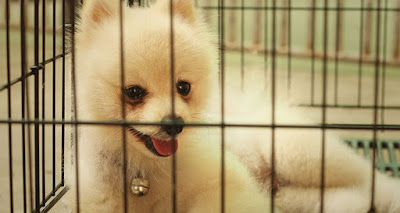Free Dog Obedience Video Course >> LEARN MORE
Video Title:
Crate Training for Your Dog - Separation Anxiety
Video Tags:
Crate Training for Your Dog - Separation Anxiety, rving with pets, Modern Canine Services, full time rving with dogs, dog training, crate train, your dog, how to crate train your dog, Separation Anxiety, puppy training, crate training a dog, crate training, dog travel crate, traveling with dogs, puppy potty training, crate training a puppy, dog separation anxiety, dog barking in crate, dog crate training, how to crate train a puppy, Modern canine vlog, how to crate train, dog crate training for separation anxiety, dog separation anxiety training, how to crate train a dog with separation anxiety, dog separation anxiety crate, how to crate train a rescue dog with separation anxiety
Video Description:
Does your dog like his crate and enjoys being in it, or is he reluctant to go in and whines and scratches to get out hi? This is Pete Walker with modern canine services, and this is Rainey Apollo and Heidi, and today's video is about crate training. We want to show you how you can trick train your dogs to love the crate. Many of our clients tell us that dogs hate being locked in the box. They say that the dogs whine or bark, and they even try to get out of the crate or destroy stuff.
The most common mistake that most dog owners make with crate training is that they used to create only when they leave to go to work or run an errand, and soon their dogs learn to associate being locked in the crate with being left alone. The most important thing about getting your dog to love his chest is to get him to experience it as a safe and fun place to rest to form this association; you train your dog to use the crate. While you are relaxing at home, start by setting up the box in an area where you watch TV or read a book or near the kitchen; while you cook, the main idea is to have the crate in an area where your dog can see you. While he spends time in the box next, make it a place where he's comfortable and wants to spend time, provide a comfy bed or a blanket and put some toys inside. Dogs are den animals and love enclosed spaces. So we found that most dogs feel more comfortable in an enclosed crate, like this plastic pet carrier, than a regular wire crate.
Related post: How to Stop Dog Aggression: So Simple Even Your Kids Can Do It
Today we will be using a wire crate without the veil because this is better suited to show the dog inside the box; make time each day to crate train your dog start by having him spend only a few minutes in the crate. However, if you already have a wire crate, you can easily make it into a comfortable den by draping a blanket or a large towel over it for our video. While you sit nearby and read or watch TV, we'd like to give our dogs a unique chew, treat; this will give the dog something fun to do while he is in the crate reserve. The special chew treats are in the crate only, and take the Treat away as soon as you let the dog out of the box.
This forms a positive association with time spent in the crate as your training progresses increase. The time spent in the box and also left the room for short periods, this process will get your dog used to being left in the crate unattended. Over time you will notice your dog relax more and more while being left in the box. You may even see him choose to rest or sleep in the crate on his behalf. This is a sure sign that he has learned to associate the box with a safe and comfortable place.
Thank you for watching. We would love to see your comments below to tell us about your progress of crate training, your dog; if you enjoyed the video, please like and share it, and please subscribe to our YouTube channel.
Related post:
- How to stop your puppy from jumping up on you
- Online Dog Trainer vs Dog Trainer in Person
- How to make your dog think you are the pack leader
Free Dog Obedience Video Course >> LEARN MORE
Video Tags:
Crate Training for Your Dog - Separation Anxiety, rving with pets, Modern Canine Services, full time rving with dogs, dog training, crate train, your dog, how to crate train your dog, Separation Anxiety, puppy training, crate training a dog, crate training, dog travel crate, traveling with dogs, puppy potty training, crate training a puppy, dog separation anxiety, dog barking in crate, dog crate training, how to crate train a puppy, Modern canine vlog, how to crate train, dog crate training for separation anxiety, dog separation anxiety training, how to crate train a dog with separation anxiety, dog separation anxiety crate, how to crate train a rescue dog with separation anxiety



















